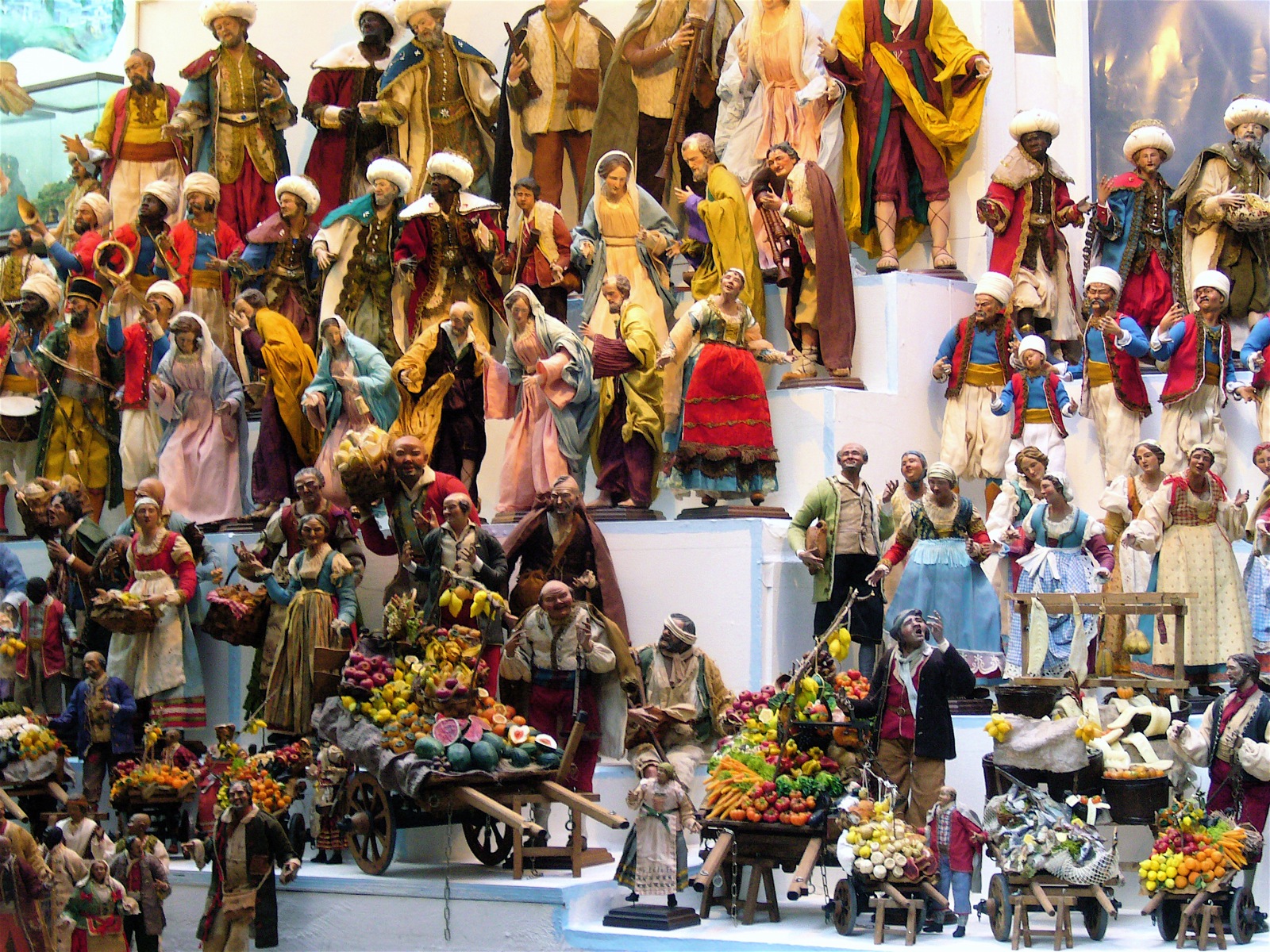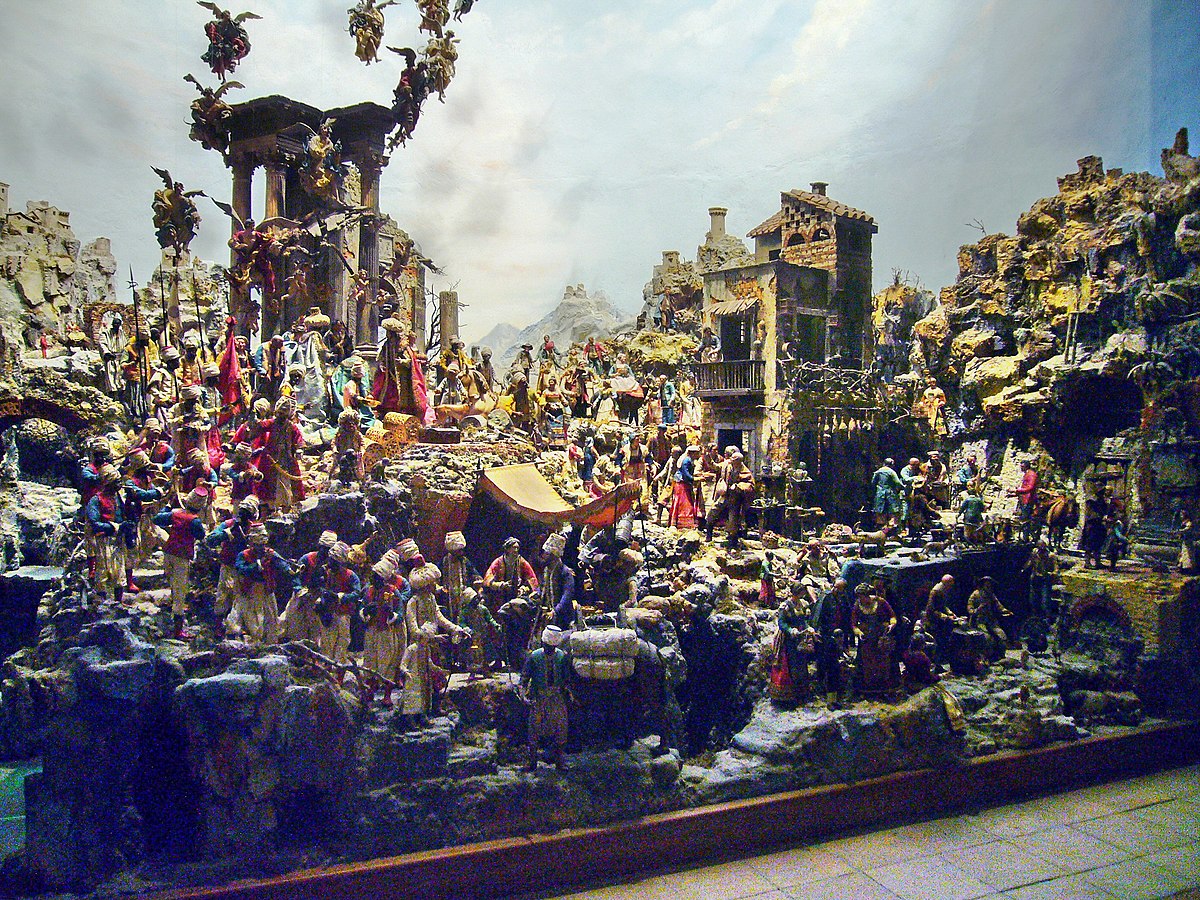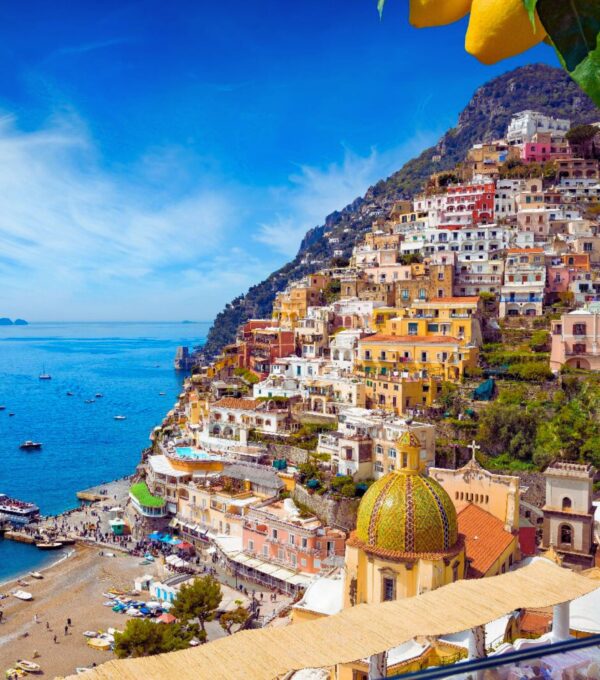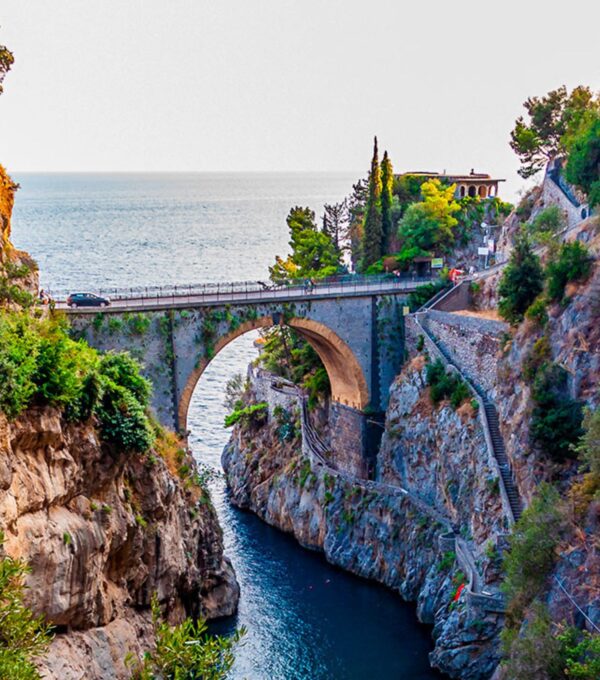Via San Gregorio Armeno, la strada dei presepi
Via San Gregorio Armeno is a road that connects the now famous Spaccanapoli with via dei Tribunali, in the heart of the historic center of the city of Naples. San Gregorio Armeno owes its fame to the fact of being the «nativity road», and represents an international tourist destination in the Christmas period, during which it assumes all its extraordinary charm and its evocative power.
Along both sides of the street, in fact, open the shops where the master craftsmen build by hand not only the cribs but also shepherds, accessories and all the elements that serve to set up a characteristic Neapolitan crib. A journey that, between the scent of coffee mixed with that of incense and moss, between the references from sacred to profane, and the colors and forms of the crib art, is an unmissable multisensory experience as well as cultural.

In Roman times, on the route of the future Via San Gregorio Armeno overlooked the temple dedicated to the goddess Ceres/ Demeter, where the faithful brought terracotta statues as votive offerings to be dedicated to the connected cult of fertility. For this reason, in the area stood the shops where were built the statues that the people then carried inside the temple. I seguito, the road took the name of Nostriana, from San Nostriano, bishop whose relics were kept in a church at the corner of today’s Spaccanapoli and San Gregorio Armeno.
Later, on the place where the temple stood, the monastery of the nuns of Saint Basil was erected, who, coming from Constantinople, brought here the relics of Saint Gregory, bishop of Armenia. By now in the Christian era, the workshops that once produced pagan statuettes were converted into places of production of statues of the characters belonging to the four Gospels. It is from this custom that the eighteenth-century Neapolitan nativity tradition developed, which saw San Gregorio Armeno become the way of the cribs, where for centuries the most important masters have alternated who have made the glory of this art.

Going up the Via San Gregorio Armeno towards Piazza San Gaetano is a truly fascinating experience, which represents a real journey through the art, culture and history of Naples, also seen that — along the route — you can not avoid to enter to visit the beautiful church and monastery of San Gregorio Armeno. On both sides of the road, in fact, the open shops present their business card made of stalls and exhibition structures full of statues of all kinds of shepherds, reproductions of ancient nativity scenes, caves of the nativity, wells and bridges, cork scenarios and architectural structures — houses, inns, workshops — to set up the cribs in the Neapolitan style — animals, accessories, tools, and all kinds of reproduction of fruits, vegetables, food, furnishings…
Without forgetting that, and now it is a well-established tradition, every year the exhibitors are added to the funny figurines that faithfully reproduce the appearance of famous people of our day who for some reason have distinguished themselves during the thing of the year: politicians, footballers, singers, actors, representatives of the national gossip, journalists, television personalities, scientists and journalists… The number of shops is decidedly large, and each one tells an artistic story that, in some cases, is decidedly ancient. This is the case of the workshop of the Capuano Brothers, born in 1840, or those of Ferrigno, Gambardella, Di Virgilio.

Discovering Demetra’s Canefora
For all those who are about to discover the enchantment of San Gregorio Armeno, it is also advisable to make a small but important discovery. Along the way, in fact, is still visible an apparently mysterious bas-relief, which leads directly to the ancient cult of Demetra. It is a rare representation, dating back to the seventh century BC, of a Canefora, or a young priestess of the goddess, covered by a light dress and a crown-shaped headdress, holding a torch and a basket full of objects used for worship.
Does the image refer to a religious phenomenon very much felt in Naples Roman, which included among other things the games of the Chandelier Festivals, during which, towards the end of the celebrations, a part of the myth of Demeter was evoked in the light of torches. In addition, only virgins, who were chosen from among the nobles and richest families of the city, and prepared in special schools to know all the aspects, even the most mysterious, of the cult before becoming priestesses, could participate directly in the cult.
So, alongside the symbols of the crib and the Christian world, it is possible — as often happens in Naples — to discover an element that refers to the ancient pagan history of the city, and that becomes even more important since it is also connected to the myth of the mermaid Partenope and then the birth of the city. According to the myth, in fact, the women commissioned by the goddess — after failing in the task of defending her daughter Persephone — were punished by Demeter and transformed into mermaids, creatures half woman and half bird. One of them was Parthenope, who would be buried on the coast where the ancient Naples of the Greeks would be founded. The bas-relief of the Canefora, is still visible today under the arch that passes on the road, level by the pavement, next to the workshop of Aldo, a craftsman who for many years, in addition to his art, also preserves this ancient treasure forgotten.
The tradition of the Neapolitan crib
The typical representation of the Neapolitan crib is traditionally set in the ‘700, and represents a cultural aspect that far beyond the simple tradition represents a real lifestyle. The first documentation of the Neapolitan crib dates back to 1021, but we know that it is in the seventeenth century that the crib imposed itself strongly in the Neapolitan tradition, moving from a simple representation of the cave of the Nativity to a complex and rich Baroque representation, where the profane element became more and more extensive and detailed. Then came the appearance of houses and taverns, shops full of fruit, vegetables and meats, and were formed extraordinary urban representations, quite similar to the appearance of a city of that time, populated by figurines wearing costumes seventeenth century.
Over the centuries, therefore, this tradition has come down to the present day — even if it has lost the magnificence of its origins in the age of plastic — maintaining almost unchanged its basic characteristics. It should be noted that, in addition to the members of the Holy Family and the Three Kings, the Neapolitan crib traditionally supports some characters who have become reference points for each setting: Benino, the shepherd who awakens to the angelic announcement of the birth of Jesus; Cicci Bacco, the innkeeper or winemaker; the group consists, among many, of the twelve sellers — one per month of the year — including the butcher, the chestnut seller, the baker, the greengrocer, the fishmonger. The most extraordinary example of monumental nativity scene is undoubtedly the Cuciniello Nativity, kept at the National Museum of San Martino, which has 173 human characters, ten horses, 42 angels, over 300 ornaments and even two monkeys.

Of course, the best time to see San Gregorio Armeno is Christmas, so you can see the most beautiful and engaging show, but you can go during the rest of the year to discover the shops, and also observe the masters at work, intent on moulding terracotta to create shepherds. These extraordinary craftsmen, moreover, are the most suitable people to have advice on everything regarding the crib tradition, including names, roles and symbolism related to each pastor.
Cover Image: italotreno





